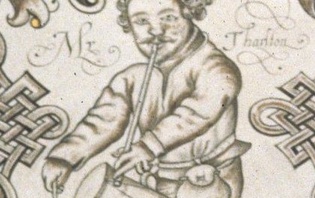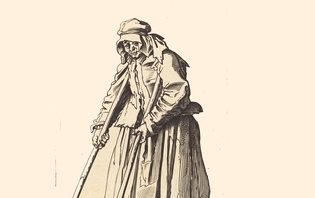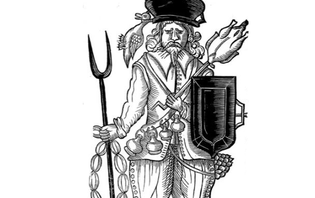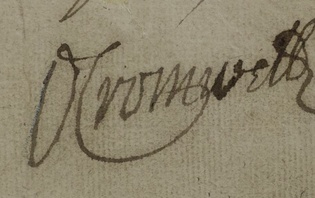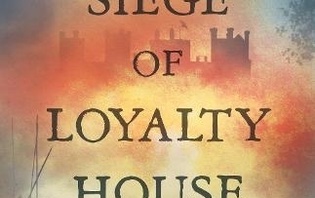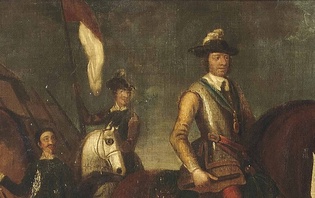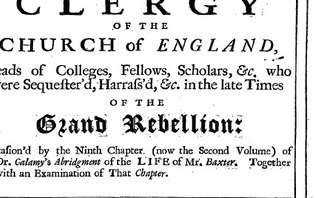Injuries and Inspections: Ex-Servicemen and the Military Welfare of the Civil Wars
The traces of the maimed ex-servicemen chronicled by the “Civil War Petitions” project are textual. They come in the form of petitions and certificates from individuals submitted to local and sometimes central authorities testifying to their service in the armies of parliament or the king and to the wounds and injuries they suffered in that service. This evidence can lead us to assume a process that was essentially bureaucratic, an exercise in submitting and scrutinising pieces of paper. In no small measure this is indeed true – and thankfully so, for if not we would have no project and little evidence of the human cost of the civil wars! – however, our focus on the bureaucracy of war relief can obscure the nature and significance of another important element in the process: the physical presence of the petitioner before those they petitioned and the testimony of their own broken bodies which they offered up as evidence of the veracity of the narratives presented in their petitions. This is, of course, a non-textual process and, as such, it is difficult to document and has often been overlooked. However, as Lloyd Bowen reveals, there are enough scattered references to piece together something of the embodied presence which lay behind the petitioning process…
The petitions for relief at the core of our project were often written by scribes and third parties in a world where illiteracy was common. However, the presentation of these petitions to local justices of the peace and their quarter sessions would often, if not usually, be undertaken by the petitioner themselves. There was an established precedent in the administering of local military relief that injured ex-servicemen should attend the quarter sessions to present their petitions and even to receive their pensions. The wording of the major legislation of 1647 and 1662 concerning maimed soldiers drew on the Elizabethan precedent which envisaged the soldier ‘repair[ing]’ to local justices with their certificates of service; the justices would then ‘examin[e] … the truth’ of the matter and decide whether relief would be given. In a process deeply concerned with the veracity and authenticity of the narrative of service and injury being told to the authorities, and detailed in the petitions they received, the physical presence of the petitioner was a further means of validating and corroborating the petitioner’s service and the nature of the wounds they had suffered. The soldier’s presence was seen as a way of distinguishing between deserving servicemen and ‘counterfeits’ who sought to deceive.
Although it is difficult to be certain how commonplace the practice was, in some jurisdictions it is clear that the bench even expected pensioners to attend each sessions to receive their quarterly allowances as well as being present at the delivery of their initial petition. This led to grumbling by some that their pension was being used up in travelling to the peripatetic sessions rather than in supporting their domestic needs. In Yorkshire’s North Riding in 1659, the sessions ordered that the treasurer was not to pay any pensions to lame soldiers but only those who appeared personally or sent in a certificate proving that they were unable to attend. In Durham in the mid-1670s, meanwhile, the local sessions passed a resolution which allowed pensioners to send in certificates of their inabilities if they could not attend personally which presumably had been the expectation to this point.
In some areas proxies were allowed to receive pensioners’ payments and some interesting evidence of this practice comes from the Welsh county of Denbighshire. Here several petitioners provided warrants authorising others to collect pensions on their behalf. In 1673 David Lewis of Denbigh, for example, drafted a warrant complete with his seal which sanctioned his friend Owen Thomas to receive his pension of three pounds a year ‘in my name & for my use as if I weare my selfe p[er]sonally p[re]sent’. Fascinatingly, the treasurers’ accounts for his county also reveal that one war widow, Margaret Dod, was entrusted to collect the pensions on behalf of claimants in Holt, while the pensioner David Lloyd did the same service for his fellow ex-servicemen in Dynhynlle, Ruabon. Dod and Lloyd were evidently providing something of a local service, saving their neighbours the trouble of attending the sessions in person and presumably receiving some kind of reward in return. The Denbighshire accounts also show that family members such as wives and daughters routinely collected their husbands’ and fathers’ pensions from the quarter sessions in the early 1660s and perhaps later also.
We can find traces of the process of presenting the petition in person in the marginal annotations made on various petitions submitted to the Cheshire quarter sessions, particularly during the period of parliamentarian rule in the 1640s and 1650s. On a number of soldiers’ petitions the sessions clerk has noted a brief and dismissive ‘absent’ and these petitions were almost all, as far as we can ascertain, unsuccessful. Evidently the petitioner had not attended the sessions and, as a result, their petition was deemed unreliable or insufficient without further and corroboration. Sometimes, however, a petitioner could send a proxy on their behalf to present their petition. This was the case with Thomas Berkhead in Sussex who noted in his petition to the sessions that ‘my wife hath come purposely about this busines’. Although there may have been good reason for disabled ex-servicemen not being able to attend the sessions meeting, presence with the petition seems to have been expected.
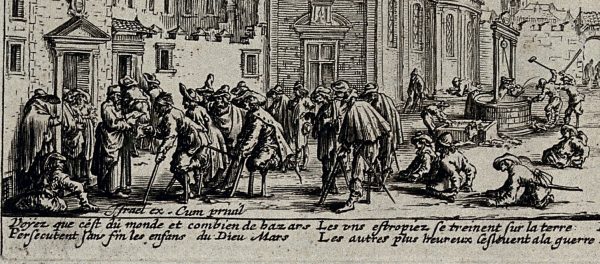
‘The Hospital’ by Jacques Callot, depicting maimed soldiers from the Thirty Years’ War lining up outside a hospital. The soldier at the front is presenting a document to an official, which may be some form of certificate or even a petition (image credit: copyright the Wellcome Collection, reproduced under a CC-BY licence).
Petitioners themselves sometimes referred to the process of appearing before the court to give visible testimony of their sufferings and injuries. Ex-servicemen such as Mawrice Parry in Denbighshire in the summer of 1660, for example, referred to the fact that at the siege of Nantwich in January 1644 he was ‘shott and greevouslye wounded in his wrist, soe that thereby he quite lost the vse of his right hand (as may appeare)’. His fellow Denbighshire royalist Edward Morris nearly two decades later provided an impressive litany of wounds received in King Charles’s service at Reading and Donnington Castle whereby he ‘is become maihmed and hath lost the vse of most of his limnes as by inspection and search of yo[u]r petitioners body it may fully appe[ar] to yo[u]r worshipps’. The phrase ‘as may appear’ occurs in a number of petitions from other jurisdictions too and does indeed seem to refer to the physical display of wounds and injuries before the justices. Such displays were seen to offer unarguable evidence of service but also of hardship and need. The Norfolk sessions of October 1655, for example, described how William Lacocke, an ex-soldier, ‘shewed this Court that his wounds are broken out’, and that he had requested a certificate for travelling to the hospital at the Savoy in London where he hoped to receive expert treatment. After examining his injuries, Lacocke’s request was granted.
The evidence of soldiers’ wounds could be given even greater weight and authority by expert testimony such as that of medical practitioners. In 1644 John Barrett, a Gloucestershire corporal, described to his military commander Edward Massey seven wounds he had received to his head as well as a serious injury to his elbow and another to his hand ‘as Mr Caradine the cyerrugion [surgeon] affirmeth’. Caradine was probably known personally to Massey and the implication was that he could confirm the origin of the wounds and thus the legitimacy of Barrett’s request for relief. In Essex in 1657 a barber surgeon, Thomas Cosin, provided a supporting certificate for the stalwart parliamentary soldier and persistent petitioner, William Gray of Braintree. Gray had only received partial success with an earlier application which had been supported by his superior officer and so he evidently believed that medical testimony would help him gain a better outcome. Cosin’s certificate described to the justices how Gray had approached him ‘to take a viue of his hurtes that weare ocaisioned by his service’ in parliament’s army. He affirmed that Gray was ‘very much debilitated in his limbs’, including one leg which ‘hath been brocken into many peeces which hath ocaisioned a great imbisillety in that parte’. He added that he would be willing to justify all this to be true before the justices if they required it. He could not, of course, provide a forensic narrative of the wounds which described exactly how and when they had been received. However, Cosin was presumably considered (by Gray at least) a medical practitioner of sufficient good standing with the parliamentary authorities that his expert opinion carried some weight in their assessment of his application for relief. He did indeed receive some extra monies but needed a further application before he received a pension.
This kind of surveillance of ex-soldiers and their injuries by the local authorities also extended to periodic reviews of those receiving pensions with a view to weeding out recipients who were considered unworthy, disloyal or insufficiently disabled and indigent. In Staffordshire in 1652, for example, the local justices were faced with an increased burden of military relief occasioned by the Second Civil Wars and Scottish invasion of 1648 as well as the continued fighting in Scotland and Ireland. As a result, and in the hope of winnowing out the undeserving, they ordered that the local justices should call the county’s maimed soldiers before them ‘to viewe the wounds and maimes of everie particular soldier’, as well as scrutinising their supporting certificates. This was necessary, they claimed, because a number of soldiers ‘under pretence of being maimed having received but light wounds are able in bodie’ and thus continued to work while also receiving military relief.
The transition from the parliamentarian to the royalist system in the early 1660s was a particularly important moment in such re-evaluations and surveys of county pensioners. In the autumn of 1661, for example, the Devonshire bench required all those in receipt of pensions to present themselves before the court so that two surgeons, appointed by the justices, could examine their injuries. In 1663 the court again asked a local surgeon to examine the pensioners in the county lists and to ‘certifye … their disabilityes thereby & whether soe much maymed as to make them fitt to receive [their] pention as maymed souldiers’. In 1664 the Cheshire bench ordered a similar census of the pensioners ‘to review their maymes & reexamine when & where they were maymed & whether constant in their loyalty’, with the aim of reducing the current burden of the pension scheme on county taxpayers so that ‘ye vnqualified persons [be] struck off’. Those ‘vnqualified’ after the Restoration, of course, included those ex-parliamentarians who had previously been receiving pensions. The Welsh counties of Denbighshire and Breconshire ordered similar reviews in the 1670s. Several ex-servicemen subsequently complained that they had been made aware too late of the requirement to attend the quarter sessions and that they had, as a consequence, been struck unfairly out of the pensioners list.
Perhaps the most striking evidence of this kind of intimate review of pensioners and their politicised injuries comes from Caernarvonshire. The document in question survives among the local sessions papers and, once again, comes from the transition from parliamentarian to royalist rule in the early 1660s. It is not known who compiled this submission but it was a response to an order from the bench of justices for a view of ex-soldiers. This had come after a deluge of petitions from royalist servicemen had been received by the court. Thirty-two men were enumerated along with brief descriptions of their disabilities and injuries. Some of those described in this list were old soldiers from the time of King James or even Queen Elizabeth, but most had been civil war servicemen. John Ellis of Llanbeblig was described as having been shot in the king’s service but this was only considered a ‘slight wound’, while John Williams of Beddgelert was hurt in the leg and thigh at Naseby with what was assessed as ‘a great wound’. Gunshot injuries could be particularly gruesome and debilitating. David Owen of Conway, for example, was described as having been ‘shott under the eie very dangerously & the bullett remaines vnder the eare’, while Simon ap William Lewis of Llanbeblig was ‘shott vnder the eare & out att the choppe’. The intimate nature of such an ‘inspection’ of potential pensioners is indicated by the case of Ellis Evans of Penmorfa who had been ‘shott in his privie members & other places of the body very dangerous’.
Such evidence, then, shows how the petitions and certificates on our website are the textual survivals of a system which also often demanded the embodied presence and physical inspection of ex-servicemen. Their civil war injuries were not simply wounds to be recounted abstractly in paper but were also physical proofs which sometimes had to be displayed publicly as testimonies of service and suffering. These fleeting glimpses of our petitioners bearing their shattered bodies for assessment by the authorities make for uncomfortable reading. They are reminders, however, of the real historical figures, in often desperate straits, who struggled to survive let alone prosper in the aftermath of this bloody civil conflict.
Further Reading
Stewart Beale, ‘Military Welfare in the Midland Counties during and after the British Civil Wars, 1642–c.1700’, Midland History, 45 (2020), pp. 18–35.
Charles Carlton, Going to the Wars: The Experience of the British Civil Wars, 1638–1651 (London and New York, 1992).
Ismini Pells, ‘Reassessing Frontline Medical Practitioners of the British Civil Wars in the Context of the Seventeenth-Century Medical World’, Historical Journal, 62 (2019), pp. 399-425.
Hannah Worthen, ‘The Administration of Military Welfare in Kent, 1642-79’, in David J. Appleby and Andrew Hopper (eds), Battle-Scarred: Mortality, Medical Care and Military Welfare in the British Civil Wars (Manchester, 2018), pp. 174–91.

